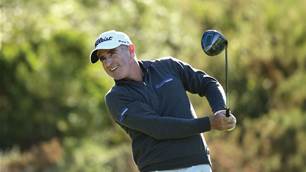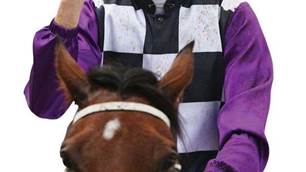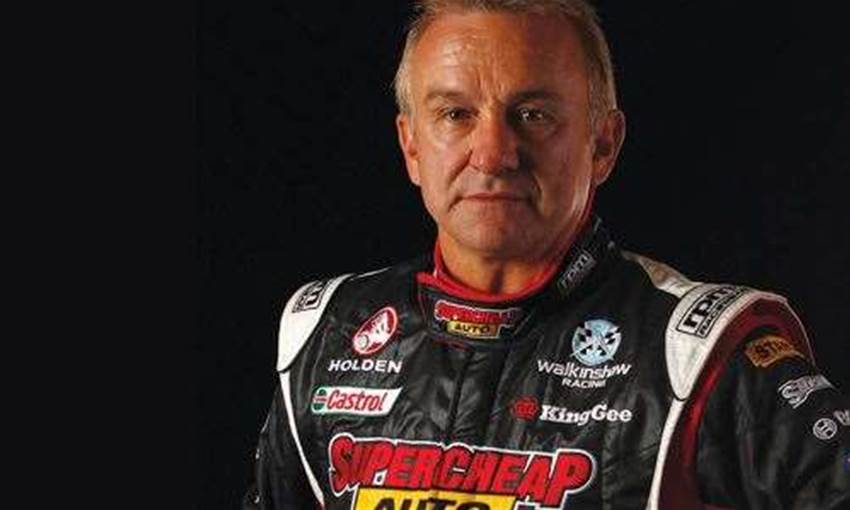We kidnapped Ingall to talk shop, shit-stirring, and the “grand final of V8s”, the Sydney Telstra 500, to be held in December on the streets of Olympic Park.

Image: Chevron Library
A terrific piece of motor racing theatre played out at a recent media call at Sydney Motorsport Park (formerly Eastern Creek International Raceway). Introduced to speak to the throng of journos was Mark Skaife, a five-time winner of our domestic Touring Car/Supercar championship, and six-time conqueror of Mt Panorama. The last words of the MC’s intro were to the effect of, “So, here he is, Australia’s most accomplished motor racing driver ... ” As Skaife was about to grab the media’s ear, V8 veteran Russell Ingall, one of three other motorsporting headline acts at the event, piped up, asking the MC, “Would you like me to step forward and say a few words, then?”
It was a fun moment, and no harm or offence was intended for a blushing Skaife, but if Ingall wanted to be prickly about the situation, he’d have a point. “The Enforcer” collected his own championship in 2005, finishing runner-up in ’98, ’99 and 2001. Bathurst? Yep, he’s won there too, in ’95 and ’97. He’s even raced more times than the late, great Peter Brock, sitting only behind John Bowe, and, yep, Skaife. Inside Sport kidnapped Ingall after that day’s formalities to talk shop, shit-stirring, and the “grand final of V8s”, the Sydney Telstra 500, to be held in December on the streets of Olympic Park.
You recently surpassed Brocky (212) on the all-time starts list, to sit behind only John Bowe (225) and Mark Skaife (220). Do you find that each one of your starts still provides more and more confidence through experience?
Motorsport is different from a lot of other sports. Football, for example, you learn pretty quickly from a young age, and as you get older, you sort’ve maintain your ability. Motorsport has evolved so much, especially with equipment. The other part of it which has changed from when I first came into the sport is the tracks. We raced on the Wintons, the Sandowns and all those circuits which have been around for 25 years. Now, we’re going to all these new Hollywood places like Abu Dhabi, Texas next year. All of a sudden you’re learning a new playground. It’s always evolving; that’s probably what keeps you interested. A lot of people ask, “You’re getting on a bit, you’ve been round a while, you getting bored with it?” But while things change, you’re learning. You’re like a kid with a new toy every time you roll up to a track.
RELATED:
Why are you nicknamed The Enforcer? Doesn’t everybody do whatever they can to “force” their way to the front?
I did a lot of my racing early on in Europe. In the early ‘90s over there, it was a very closed shop because there were a lot of driver/owners, and they were pretty protective of their little bit of turf. It’s very cut-throat, more so than here, in the respect you have one year to prove yourself, and if you don’t, you’re into the drivers’ graveyard. You have no mates, everyone wants your job, and basically everyone wants to kill ya! I came back with that mentality; after six years in Europe, it’s embedded in your head. I came back here and it was probably a bit more gentleman-like racing ... If there was someone in front of me, I fed them into the fence and got on with it. I couldn’t work out what the uproar was. I often wondered, “Why does everyone hate me? That’s just racing.” A lot of people didn’t like it, both within the industry and spectators. Now, it’s what people want – entertainment.
A new group of followers wants to see aggression. The nickname evolved through the media and I just ran with it.
When you first heard of this new “Supercars” idea being mooted, what were your thoughts ... That the sport was on a winner?
When I’d left to go to Europe, it was still the Sierra and Nissan days ... and I just didn’t like the racing here. It was very uneven, you had turbo-charged cars in there; a big disparity between the cars. That was the main reason I went overseas. I thought, “Well, if this is the pinnacle of Australian racing, I may as well go overseas and have a crack.” It was when they changed the format in ‘95 – I came back that year and won Bathurst with Larry Perkins – that it all changed. It went back to the Commodores and the Falcons. They were just getting on top of a format. The cars were getting a lot better, they were fast, they handled a lot better, they were nicer to drive; they were becoming more like racing cars, instead of hot-rodded road cars.
















